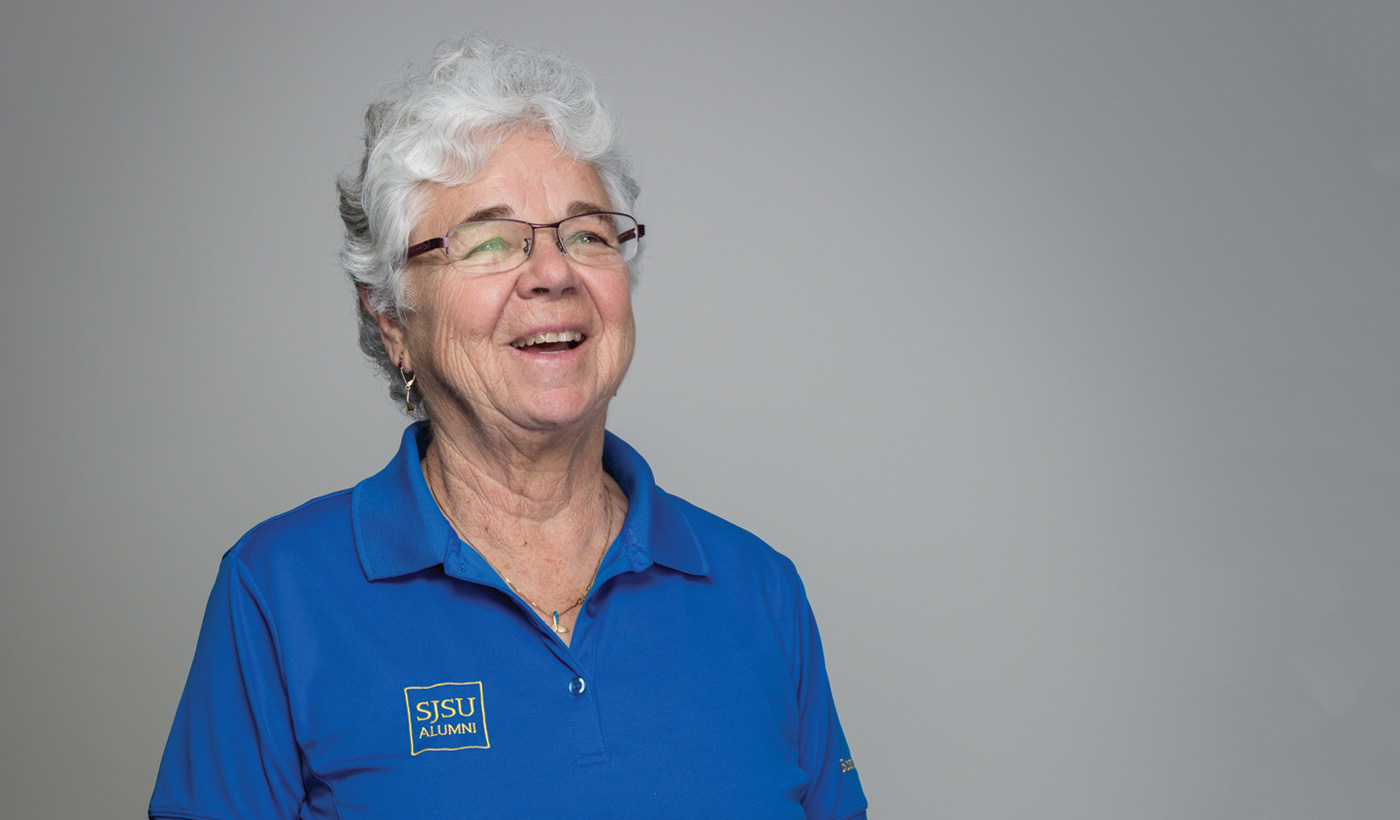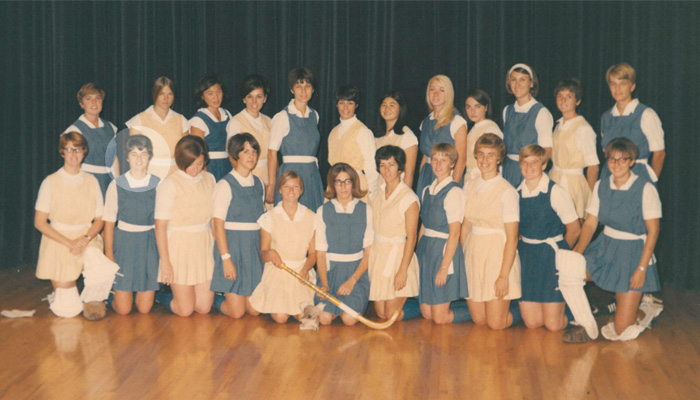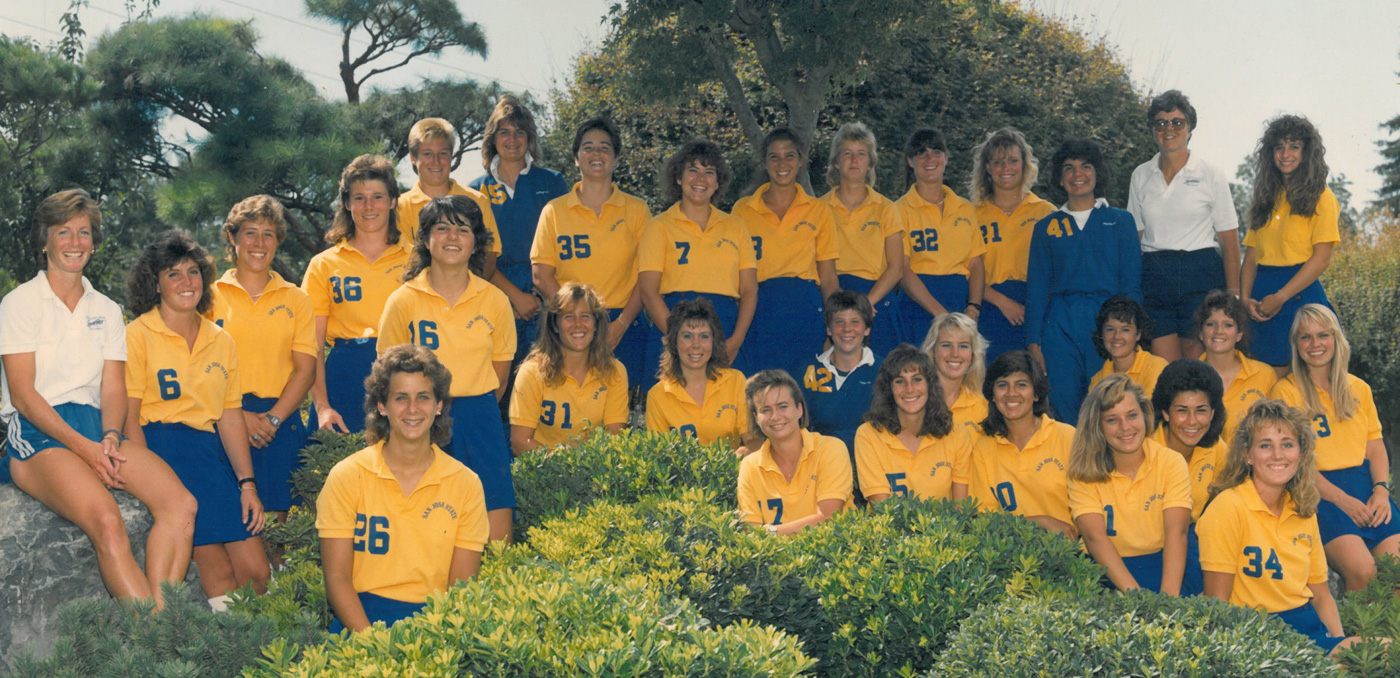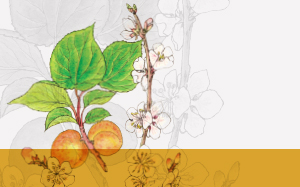Spartan Women in Sport: Carolyn Lewis, ’70 Kinesiology

Photo: David Schmitz
If it weren’t for a fire at a peach cannery, Carolyn Lewis never may have discovered collegiate field hockey. The San Jose State freshman worked nights at the cannery, and though she was already an experienced high school and club volleyball, basketball, softball and field hockey player, she had not considered playing sports in college. And then, one night, the cannery caught fire, requiring a weeklong closure—just enough time for Lewis’ little sister to convince her to sign up for field hockey camp. There she met San Jose State field hockey members and she fell in love with the game, the camaraderie of the team, the focused attention and support of her coach and mentors.

Photo: SJSU Athletics
“A fire can change your whole life,” says Lewis, ’70 Kinesiology, ’70 Teaching Credential. “I was going to be a biotech researcher. When I met the players from San Jose State, they said, ‘you should play. Let’s get you some equipment.’ I got the equipment, made the team, and started my career in field hockey.”
At SJSU, she was introduced to a supportive network of woman athletes and administrators.” Joyce Malone, who was the women’s athletics director at the time, was one of the best mentors I ever had,” she says. “She was the consummate professional and very caring. She hired me as a student assistant, and by the time I left college, I had decided that I wanted to be a coach because I loved the empowerment it gave to women.”
Despite the emotional support she felt from her peers and coaches, it was hard to ignore how differently female and male athletes were treated. This was Silicon Valley in 1966; the Valley of Heart’s Delight. Women’s sports were extracurricular—they were not a career. She had learned this in elementary school, when girls had to play softball on asphalt while the boys played on grass. Why else would there be college athletic scholarships for men but not for women? Men’s sports were serious; allegedly they required a focus and commitment that demanded more attention, more time, more faculty, more staff—and perhaps most controversially—more money. These were the messages that Lewis internalized while competing in four college sports.
When she was an undergraduate, woman athletes did not receive any per diem for travel or accommodations, regardless of how well they played. One memorable tournament involved a caravan to Chico State—with athletes driving their personal cars, because there was no organized transportation for women’s sports—where the field hockey team spent the night sleeping on the floor of the men’s wrestling gym. The next day they lost the game, though, as Lewis says, they “didn’t lose much after that.” Their uniforms weren’t practical either. Woman athletes were expected to wear skirts—not just during competition, but around campus.
“In the late ’60s, wearing slacks was an act of protest in itself,” she says. “We would walk around campus in our slacks and hope we didn’t run into a physical education professor somewhere else on campus. Small acts of defiance make change.”
“Gender equity didn’t only help women. It helped men’s minor sports as well. I took pride in San Jose State because we became a model for gender equity. If we could make it work, then other schools could too.”
Looking back on her more than 30 years as an athlete, coach and administrator, Lewis’ accomplishments can be summed up as a series of important, incremental acts of change. To her, the status quo existed to be observed, explored and challenged—all in the name of progress for herself, her students, San Jose State, and ultimately collegiate athletics as a whole.
The skill set she developed as an athlete served her well as a teacher, coach and athletics administrator. The very same determination to make a basket, support her teammates or score a home run came in handy when she recognized subtle and not-so-subtle discrepancies between the way men’s and women’s teams were treated.
“Learning how to push yourself beyond what you think you are able to do, making a commitment and staying with it, being able to take criticism and realize that it’s meant for the best, thinking on your feet—these are all good attributes to have,” she says.
After she graduated in 1970, Lewis taught a year at Leigh High School in Campbell, then moved to Washington to pursue a master’s in sports psychology. Whether she was playing sports or coaching at the college level, she was always keenly aware of the disparity in funding between men’s and women’s sports. Fresh out of graduate school, she coached women’s volleyball, basketball and softball at Cal Poly Pomona. Women were expected to coach multiple sports, as well as teach as college professors.
“The financial discrimination back then was blatant,” she remembers. “Someone left their budget on the copy machine and I saw that the total budget I had for the women’s softball program was less than the budget line items for the baseball team’s belts and sanitary socks.”
Several times throughout her career Lewis had to grapple with the stark differences in the way men’s and women’s sports were perceived. Was an entire softball team meant to be worth as much as men’s socks and belts? Even if a university did not intend to send that message, how would it make a softball player feel? Though she learned to be a savvy and successful fundraiser, Lewis made it a priority to create as many opportunities for her athletes, women and men, as possible.
In 1975, she returned to San Jose State to coach, and later became an athletics administrator. When the Association of Intercollegiate Athletics for Women started offering scholarships for woman athletes that same year, she gave the first athletic scholarship to a woman student-athlete in university history—with a major portion of that scholarship coming out of her own pocket. She’ll never forget the amount ($300) or the name of the recipient (basketball player Lori Stall) because it represented a necessary step toward gender equity in sport. Lewis’ donation kicked fundraising for women’s athletics into gear, inspiring a Run for Nationals jogathon in 1976 to support any team in the department that qualified. The fundraiser was so successful that it inspired the annual Walk for the Women of Sparta, an event where participants could gain sponsorship for every lap walked.

Photo: SJSU Athletics
In the late 1980s, San Jose State merged men’s and women’s athletics into one department. Women’s field hockey had been a top-10 team for 10 years with Lewis as coach. Her philosophy? To be a good coach is to “be interested in a person’s total well-being,” from sports to studies and extracurriculars. Despite this, the momentum for gender equity in sport that had been sparked with the passage of Title IX in 1972 had begun to slide. Athletics was forced to change its approach to funding sports, and in 1988 that meant cutting wrestling, men’s cross country, men’s track and field and women’s field hockey.
Heartbroken, Lewis watched her field hockey players sit outside the university president’s office for four days, waiting to hear why they couldn’t play. As unhappy as she was with the decision, she opted to stay on at San Jose State as the associate athletics director, resolving to “make sure it never happened to any other team again.” Instead of giving up or accepting jobs elsewhere, she investigated the institution of college sports and how she could help create change from inside.
What did that look like? Lewis organized and initiated San Jose State’s Student-Athlete Support Services unit in 1988 and the Student-Athlete Advisory Council. Staying true to her promise to increase equity in sport, she helped develop the Gender Equity plan in the 1990s. This meant leveraging support across campus and throughout athletics.
Change didn’t happen fast; it was a campus-wide effort, a series of “heart-to-heart discussions” that required breaking down stereotypes that had, knowingly or unknowingly, affected the resources allotted to male and female athletes. Lewis says that she and others had to discourage the belief that woman athletes didn’t mind sharing beds on overnight trips; that women didn’t eat as much as men, and therefore did not require the same per diem reimbursements; that women didn’t care as much about physical injuries or didn’t need their own team physicians. Though Title IX had passed in 1972, it took time for universities to apply and preserve equal access to federal resources—and in San Jose State’s case, it took leaders like Lewis, who brought campus influences together to question cultural norms. Ever the athlete, Lewis wasn’t about to give up on a fight that she knew was worth winning.
The Gender Equity Plan succeeded in creating a campus conversation, and was later reinforced by the Equity in Athletics Disclosure Act (EADA) in 1994, which required all coed institutions of higher education that offer federal financial aid to publicly disclose information about their intercollegiate athletics programs. By forcing universities to be transparent about scholarships, resources and salaries, the government helped athletics departments across the nation clarify funding for both female and male athletes.
“Gender equity didn’t only help women,” Lewis says. “It helped men’s minor sports as well. I took pride in San Jose State because we became a model for gender equity. If we could make it work, then other schools could too.”
Lewis’ commitment to sport didn’t end when she retired from SJSU in 2003, or even when she was inducted into the SJSU Sports Hall of Fame in 2014. Though she no longer plays competitively, she is still a triple-threat hiker, kayaker and sailor.
“Sports empower women to know that the better they take care of themselves, work as units, and act as team players, the more they can improve themselves,” she says. “It’s important to follow your heart, be true to yourself, and be true to people. As my parents used to say, you never forget the truth.”




Wonderful article on Spartan Women In Sports
B. Hubble 1967
Totally awesome that she changed
many lives for women in sports.